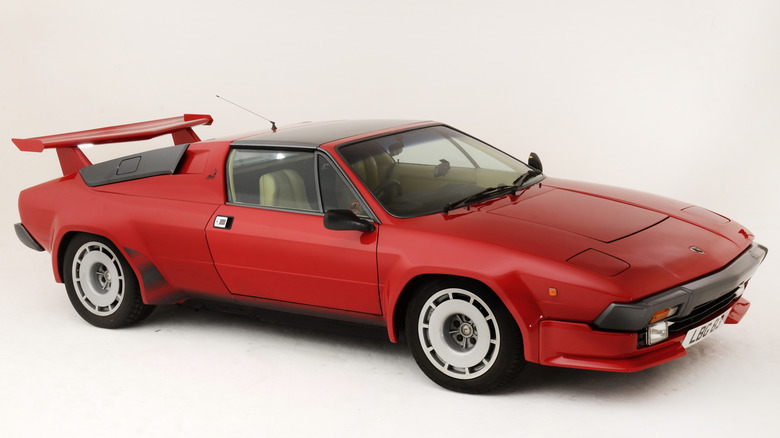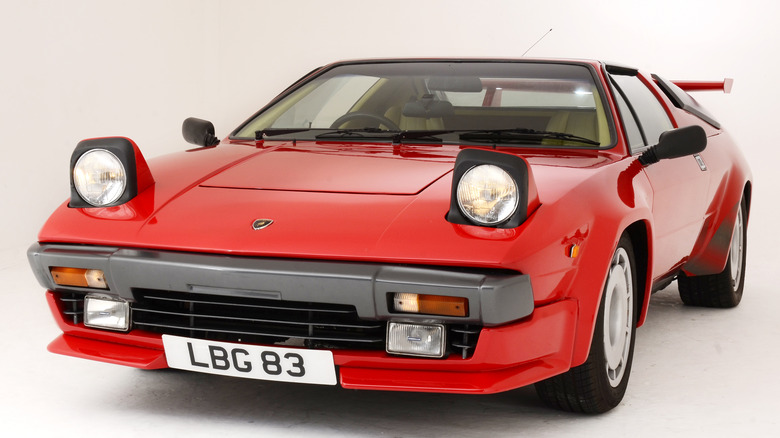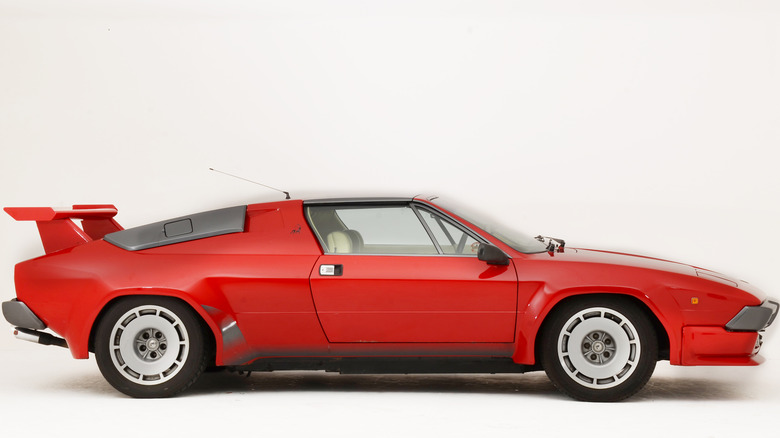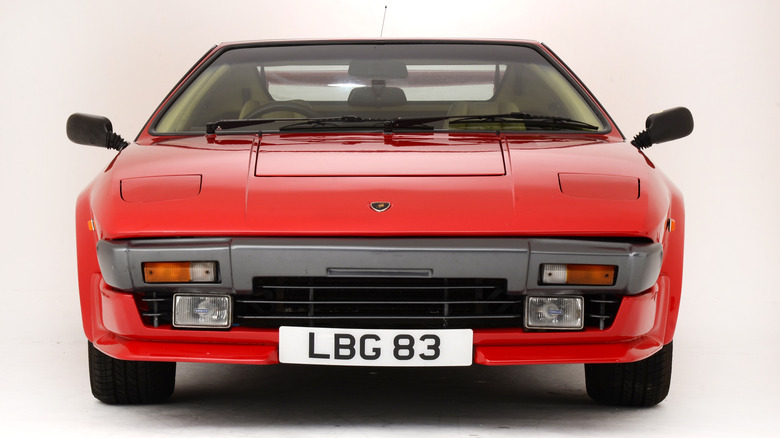The Reason The Lamborghini Jalpa Was A Failure
Even if you aren't a car enthusiast, you've heard of Lamborghini. Models like the Countach, Diablo, Gallardo, and Aventador are historically important examples of automotive design. If you're a video game fan, you're likely familiar with the Lamborghini Murcielago, which is found on the cover of "Need for Speed: Hot Pursuit 2." Suffice it to say, it's an iconic brand.
For a brand as flashy as Lamborghini, it's hard to imagine it having a few under-the-radar cars. The 1970 Lamborghini Jarama, for example, was meant to be a comfortable cruiser and was unassuming, at least compared to other Lamborghini models. The company's founder Ferruccio Lamborghini even took a liking to the Jarama, according to Lamborghini. Some models from the Italian automaker weren't as lucky, and one such car was the Lamborghini Jalpa.
You'd be hard-pressed to find a truly dismal car in Lamborghini's history, but the Jalpa misses the mark compared to just about every other car in the company's history. According to Lamborghini's official history, the Jalpa was a sports car designed not for fire-breathing wild-eyed runs around a track, but for comfort. It was also the last Lamborghini with a V8 engine until the Lamborghini Urus SUV. Compared to Lamborghini's incredible track record of hit cars, the Jalpa was a definite misfire.
They can't all be winners
The Jalpa starts to fold like a cheap suit when compared to its contemporaries. On the outside, the Jalpa looks dorky. It looks like a big wedge on wheels. Compared to its sibling the Countach, the Jalpa looks dated and cheap despite having debuted in 1981, almost 10 years later than the Countach. Both models were designed by Bertone, the legendary Italian design studio, but the Jalpa must have drawn the short end of the stick. The Ferrari Mondial from the 1980s wasn't exactly a winner from Ferrari's stable, but it's lightyears ahead of the Jalpa in terms of design.
The Jalpa's driving performance left much to be desired. Its 3.5-liter V8 offered only 255 horsepower and propelled the car from 0 to 60 miles per hour in a leisurely 5.8 seconds (via Car and Driver). That's slower than a Buick Grand National by more than a second, and in contrast, the Lamborghini Countach had a V12 engine.
Overall, the Jalpa looked like a shovel and was slower than a Buick, and those factors didn't exactly add up to a win for Lamborghini. Only 420 Jalpas were produced from 1982 to 1988. Last Year, Lamborghini celebrated the Jalpa's 40th birthday but neglected to mention any performance figures. That's probably for the best.
Not Lamborghini's best work
To understand how disappointing the Jalpa was, one doesn't have to look much further than Lamborghini's historic product lineup. Under founder Ferruccio Lamborghini's tutelage, the brand practically invented the supercar genre as a huge shot across the bow of Ferrari. In 1971, Lamborghini debuted the Miura. At the time of its production, it was the fastest production car in the world at a top speed of over 170 miles per hour, according to Lamborghini. The Miura has since been heralded as not only one of the best Lamborghinis ever made but one of the best cars, period.
Even after Ferruccio left the company in 1972, Lamborghini didn't immediately start dropping the ball; it was still cranking out the Countach, after all. In 1986, the brand came up with its first SUV, the LM002. The LM002 was a V12 super truck that looked more at home on the battlefield. After the LM002 came the Diablo in 1990, another hit car from the company.
An otherwise perfect track record
Compared to the rest of Lamborghini's almost perfect lineup from its inception in the 1960s to now, the Jalpa is almost a fluke. Even with the car's weak V8 and almost goofy-looking appearance, the brand still managed to sell 420 units. That seems like a lot for a brand as exclusive as Lamborghini, but that's a minuscule number when you consider the fact that the car was produced for six total years. For comparison, Lamborghini sold over 3,000 Diablos during its 11-year production cycle.
The Jalpa wasn't maligned because it was a bad car by any means; it was still a Lamborghini and bore all the badging to remind you of this fact. The Jalpa isn't fondly remembered because it betrays the Lamborghini bull placed squarely on the hood. Instead of a wedge-shaped futuristic supercar Ferrari killer like one would expect from Lamborghini, the Jalpa was a dopey pile of disappointment that also looked like a wedge.



